Barcelona: the sights to see
Barcelona is a city very close to my heart; I have travelled there several times and lived there twice. During those times, I worked, danced, explored, ate, drank, took photos and generally explored as much as I could. As you probably already know, Barcelona is very famous for its tourist sites – most notably, the works of Antoni Gaudí scattered across the city. There are many other hidden treasures along the way, though, including art, bars and markets. Let me take you by the hand and lead you through some of my favourite sights to see in Catalunya’s fantastic capital city.
Casa Milà
There are several buildings designed by Gaudí in this city, but my favourite has to be Casa Mila. Like the Casa Battlló, Casa Mila is located on Passeig de Gracia, not far from Diagonal metro station on the corner of Passeig de Gracia and (unsurprisingly) Avenida Diagonal. I love this building for its undulating curves (there are no straight edges in the building) and its alien-esque roof-top sculptures, which I will discuss further below.
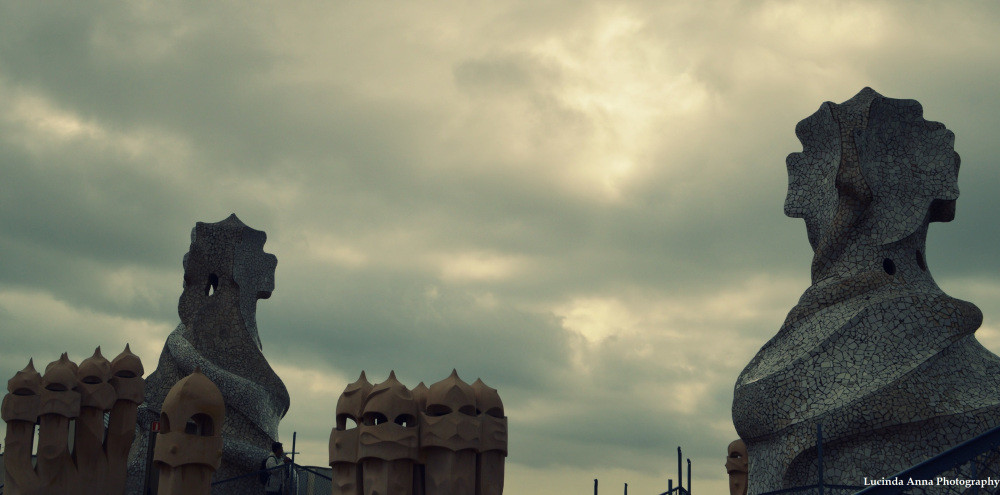
Having been there twice, my first recommendation would be to show up early because it can get busy. The first time I went, my mother and I had walked there from El Raval and arrived at about 8:30 in the morning (the opening time was 9:00); we waited for it to open, but were alone for just ten minutes, at which point a large tourist group joined us. Time went on and the heavens started to open, but we were not put off. At 9:00, the doors opened, we bought our tickets, and – not wanting to get in a lift with a large group of chattering tourists - we decided to take the stairs to the roof. What we didn’t realise when making that decision was quite how many stairs that was going to be (it turned out to be approximately three hundred, if memory serves). By the time we finally hit the last flight, I turned to my mother to tell her the good news, only to be greeted with ‘don’t talk to me, I’m going to be sick’… At least we got our daily exercise.
Another bright side of having gone directly to the roof, once my mum forgave me, was that when we got to the top, it was still totally deserted. It had started to rain quite heavily, adding to the dramatic scene of sweeping curves and arches, alien-head sculptures covered in emerald-green broken glass, and caves swirling towards the sky. From this viewpoint, one can see Tibidabo Cathedral presiding over the city in one direction and Gaudí’s Sagrada Familia cathedral under its endless construction in another, as well as the ant-like commuters and tourists flowing through the streets below.
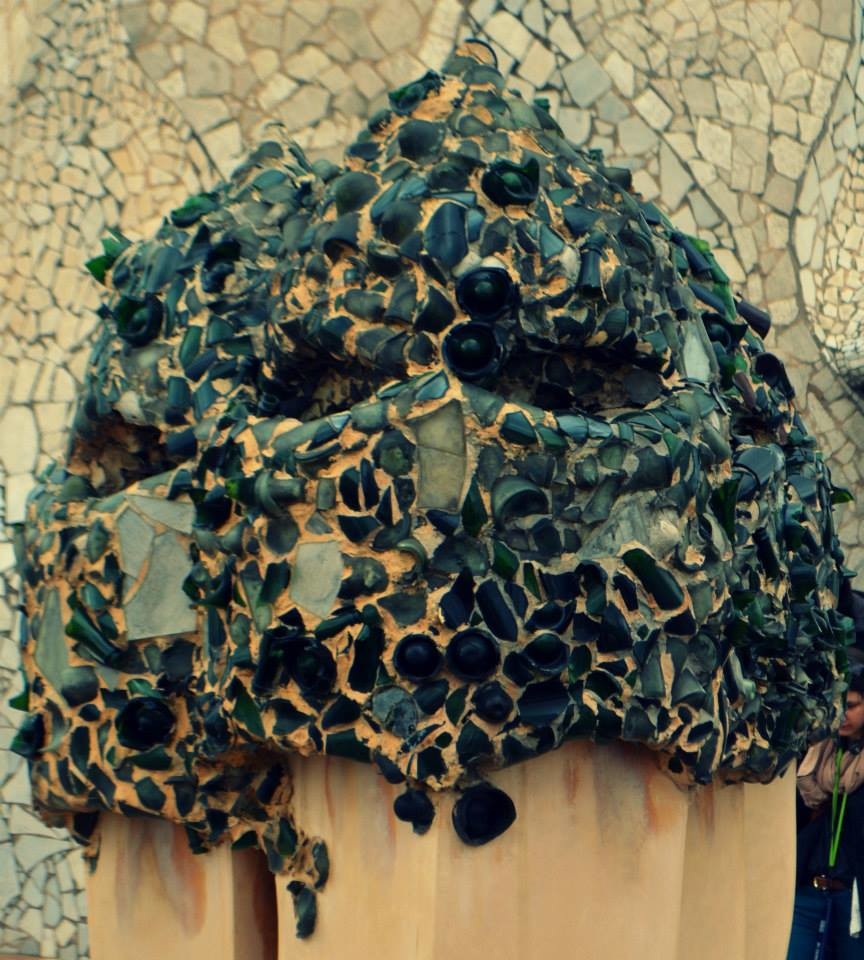
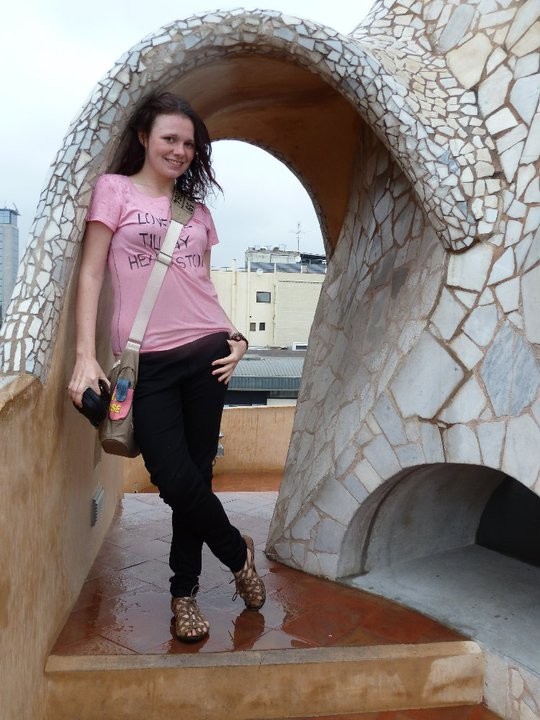
(This photo was taken seven years ago... I still love Barcelona and I still love this building. Nothing changes. )
Just as we had explored every angle of it and taken our fill of photographs and were about to take the lift down to the other floors, the tourist group who had queued behind us arrived at the roof. Good timing! My mother and I wandered through the floors showing exhibitions, to-scale models of the building, explanations of its design and building process, and an apartment inside the building. All of these aspects were quite interesting, although the roof really is the most spectacular part of the structure. As we were leaving the building, the staff had just out a sign saying the roof would be closed for the rest of the day due to the rain – even better timing! The second time I visited, I was showing a friend around the city; she is not by nature an early riser, so we ended up at Casa Mila at around 13:00 on a sunny day. Needless to say, the queue was long and the roof was busy – my friend seemed fine with that, but I promise you that it is totally worthwhile to get there a bit earlier and appreciate the views and the creations in peace.
Mount Tibidabo
Mount Tibidabo is one of my staple tourist sites – I must have been there four times. From Plaza Catalunya, just catch the L7 metro (the brown line) to Avenida Tibidabo. It is only about ten minutes away, and is at the end of the line, so getting off at the wrong stop is almost impossible. Getting off at Av. Tibidabo, you have two options: the first is to get the bus from the bottom of the hill to the funicular, and the second is to hike it. I have done both. If you are looking for your daily exercise to justify any later indulgences, the walk is fairly long, but not too difficult (in comparison to, say, climbing up to the Carmel Bunkers); however, it does take longer. Walking up Avenida Tibidabo is a straight line, then comes the ‘mountain’ part of it. Once you enter through what is essentially a side-gate, the path stops being the straight line it was before, and begins to weave to and fro up the side of the hill. If you like hiking, have time to spare (about twenty minutes to half an hour, if I remember correctly) and wear comfortable shoes, it isn’t a problem. This route will eventually take you to the same point as the bus. Speaking of which, there are two types of transport which you can catch from the bottom of Av. Tibidabo: the normal public transport bus and a blue, traditional-style tram. The tram is no faster than the bus and costs about double the price, so I tend to consider it a bit of a tourist-trap, but if you want to try it for the experience, go ahead. I find the normal bus more practical, especially if you happen to have a T-10 travel card, since these are also valid on the bus systems (in addition to the metro).
Whether you choose to walk or catch public transport, you will end up at the bottom of the funicular, which then takes you up the last leg to the top of the mountain. Here, you will need to buy a ticket (and keep hold of it, it also acts as your return ticket! ); scan the code, go through the barrier, and let the funicular carry you the rest of the way up. The views going up are a taster for what is to come, giving you glimpses of the city and sea becoming further and further away. The journey itself is only a couple of minutes. It feels rickety, but don’t worry about it – the system is stronger than it seems. Then, finally, you are at the top.
You are greeted with the view of Tibidabo Cathedral towering above you and the city, a golden Jesus standing above it and opening his arms to the city, sea and skies. To your right, there is the famous antique fairground, including a brightly-hued Ferris wheel and model aeroplane which circles out over the edge of the fairground. There is a café selling your standard array of baguettes (cheese, jamón, cheese and jamón, various types of sausage, etc. ), snacks (such as olives), coffee, soft drinks and alcohol. If you have hiked up the hill, a beer in the sunshine will go down a treat – I speak from experience. If you have a sweet tooth, you will enjoy the churrería (or xurrería, since it is in Catalan) or candyfloss stall selling picture-perfect, pastel-pink clouds of sugar.

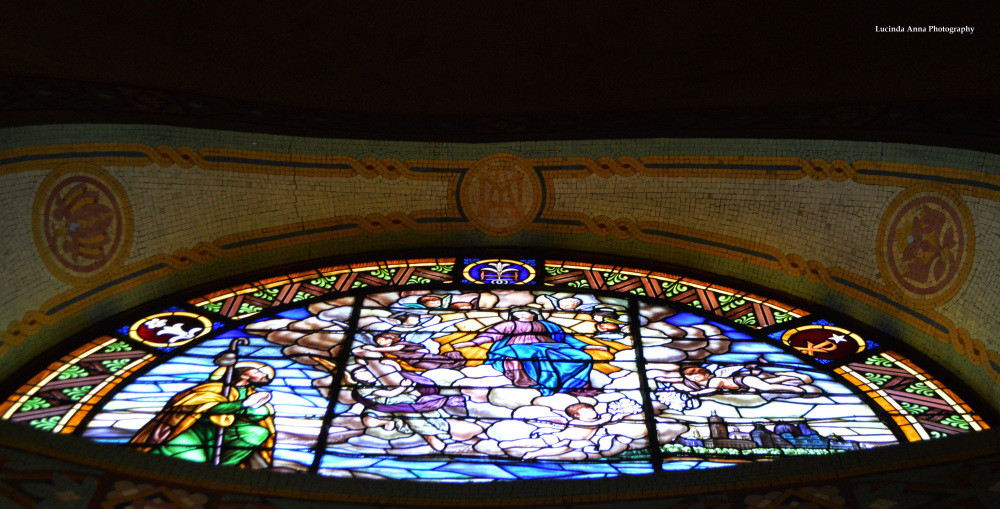
The interior of the cathedral is suitably impressive with its statues and decorations gleaming gold in the semi-darkness, as well as the vibrant stained windows. You can pay a fee of under three euros to take a lift up to the top of the cathedral, where you’ll find a rather incredible 360-degree view of Barcelona laid out before you. You can go even higher, to just below the feet of the statue of Christ. I started to get vertigo at this point, not so much by looking down at the fairground, the city and the sea, but simply by looking up and seeing just how close that statue was – the statue I had seen from both the base of the cathedral and from sea level. If you want to get up this high, make sure you are okay with walking up and down steep stairs as well as with heights. Another quick word of warning: I did get ripped to pieces by flying ants, even in January. The views are definitely worth it, though, especially on a nice day.
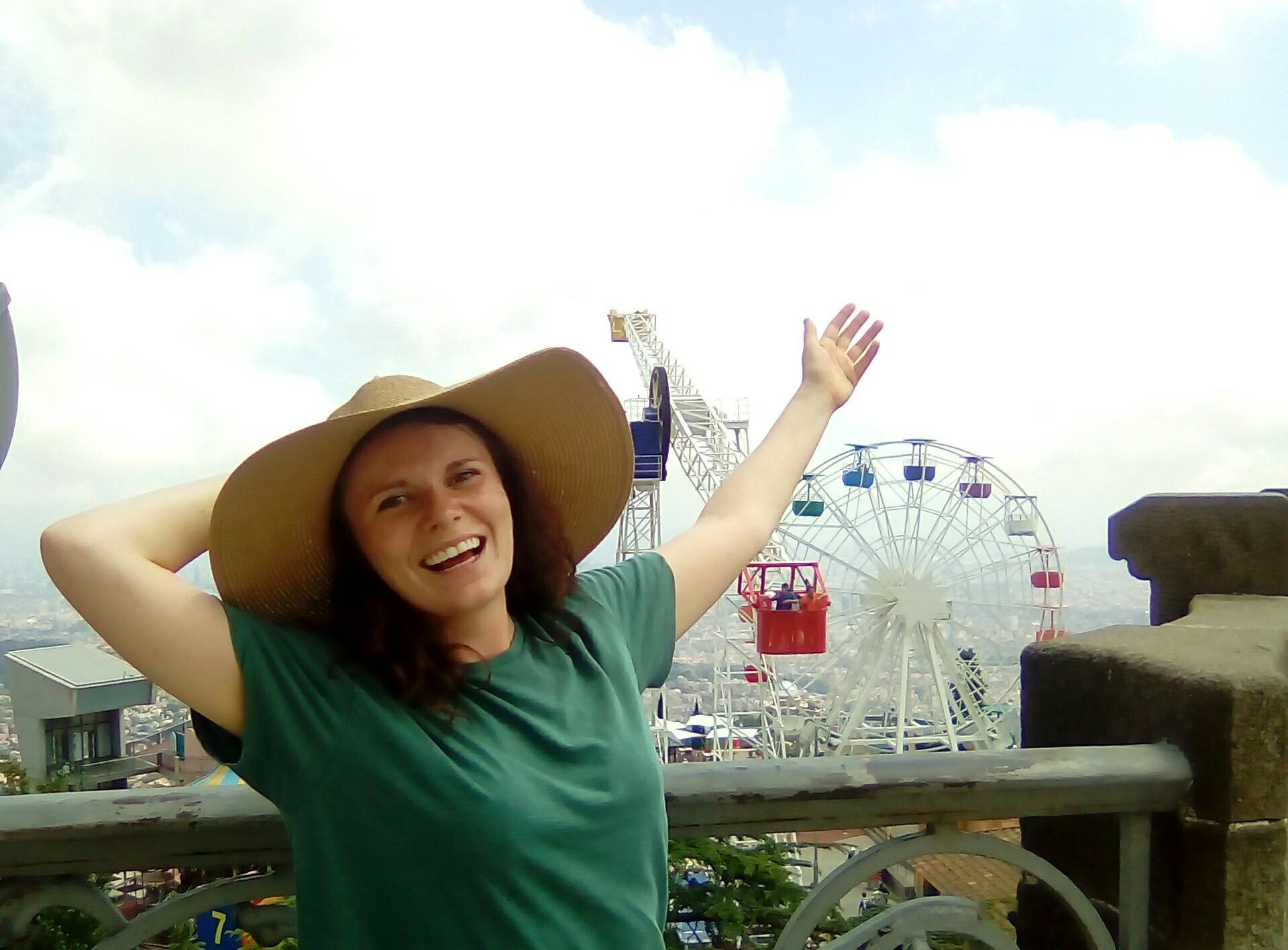
The Kiss – El Món Neix en Cada Besada
I love this art piece. It can be found in a hidden away corner a stone’s throw from Barcelona Cathedral, and was designed by Joan Fontcuberta. The title means ‘the world is born with every kiss’; the design from afar appears to be a photograph of two sets of lips kissing, but upon coming closer it is revealed to be made up from a collection of photographs. These photos include people diving, people kissing, family photographs, graffiti, candid photos of friends and snapshots of everyday life. I lived just a five-minute walk from the piece, tiled on a wall between a Desigual shop and a Vietnamese restaurant.
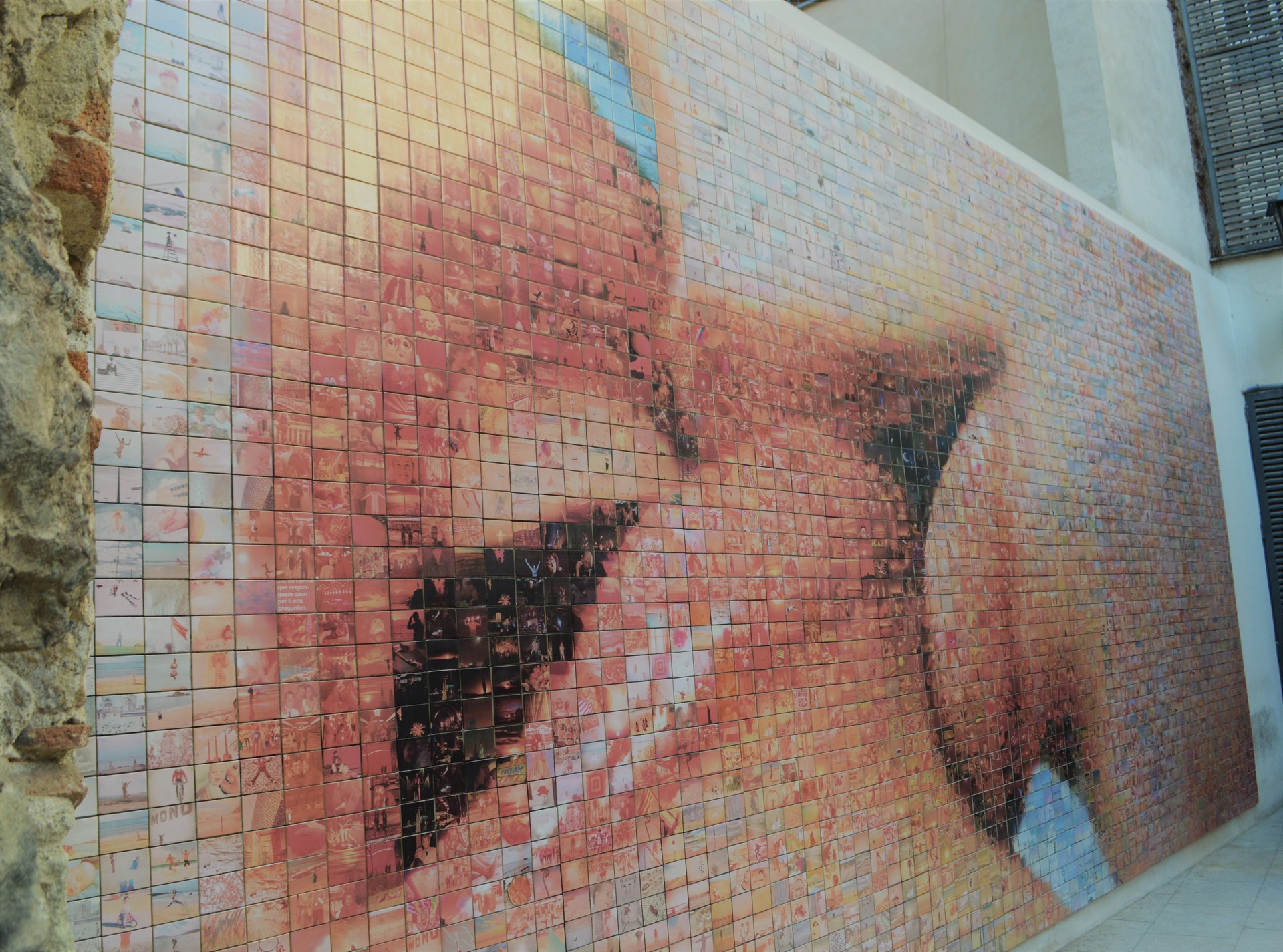
I love this piece partially for its hidden-gem quality – whilst the majority of people pass the little street it is set in to see the towering Barcelona Cathedral in the square, the artwork remains comparatively undisturbed. Of course, the later you pass by it in the day, the more people you will find taking selfies in front of it, especially in the summertime. But usually, it is fairly quiet. But my greatest reason for enjoying this mosaic is that what seems to be one great image is made up of small, instantaneous moments frozen in time – moments of people’s lives, of our lives. And it is these instants, fleeting and crystalized, of different people and things at different times which come together to create a whole, an image of intimacy and love: a world.
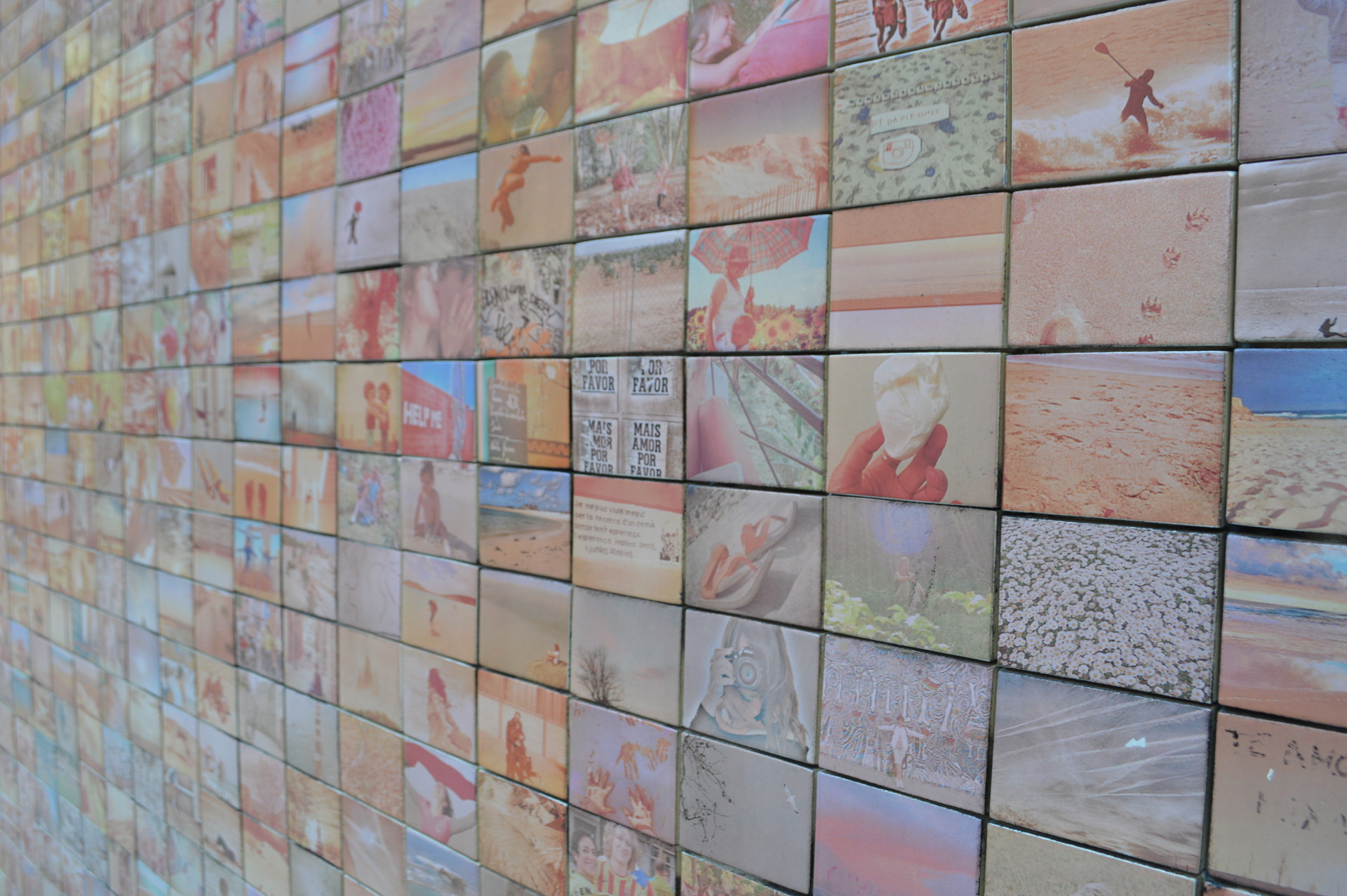
El Bosc de les Fades
This name of this bar translates from Catalan as ‘The forest of Fairies’. I had no idea this place existed until my mother told me about it, despite it being less than ten minutes from my door. You could be forgiven for missing it; it is hidden away down the same street as the Wax Museum, which I have never been tempted to visit. The day we went, the sun was blazing in full force, the heat penetrating every corner of every alley. But upon entering the bar, you are greeted with semi-darkness and cool air, and you almost immediately forget the brightness and heat of the real world.
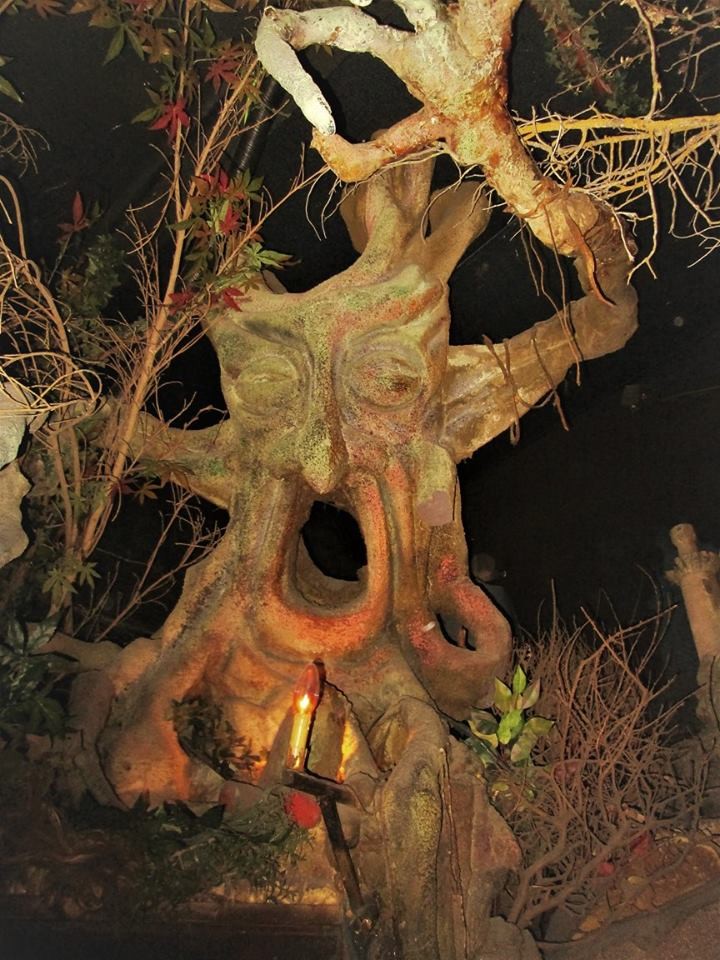
(Nature is angry)
As the name suggests, the theme of the bar is an enchanted forest. Vines, trees and leaves decorate every aspect of the establishment, whilst a nymph perches in the interior waterfall and lagoon, and an enraged, contorted tree awaits you in the hidden walkway – for the Disney generation, it was quite reminiscent of a very angry Grandmother Willow from Pocahontas. I can only imagine she is incandescent at what the human race is doing to her world, and with good reason. Every half hour or so, the dim lights are plunged into darkness and a forest storm engulfs the bar; sound effects of torrential rain and thunder fill the area, interspersed with flashes of lightning. It sounds cheesy, but it was actually rather good – the bar already feels very cozy, and the storm adds to the effect of being far away from a hot city in the daytime.
The drinks are much more reasonably priced than I would have expected for what is more or less a novelty bar; a glass of cava costs 3 euros. I also managed to brush off my Catalan to order a round of drinks and didn’t get looked at like I was an alien (which sometimes happens when I, very obviously not Catalan, try to speak the language instead of Spanish), so that was a boost to my ego before we took our seats next to the base of a thick, gnarled tree. Hot and cold baguettes are sold, in the normal selection of flavours (for reference, see the section about Tibidabo), but you don’t really come here for the food.
There was, rather inexplicably, a life-size model of a Victorian-style tea room near the back. It was pretty in a quaint way, although I still have little idea what it was doing there in a bar whose main decoration consisted of foliage and creatures. Overall, I was surprised at how much I enjoyed the bar. One might expect it to be something more for children, but very few children were there until just as we were leaving – perhaps this amplified the joy of being there (I am not a great fan of kids). The bar was dark and refreshingly cool, well-decorated, sweet and kitsch, but not overwhelmingly so; it was entertaining escapism without forcing anything down your throat. It reminded me of the simple pleasures of being young and believing in fairies myself, and I could drink cava at the same time.
El Parc de Laberint de l’Horta
When people think of parks in Barcelona, they generally think of Parc Guëll. And Parc Guëll is nice – visit it when it’s empty and you can fully appreciate the cheerfully-coloured mosaics, the waved walls, the sculptures, pillars and fountain in peace. I do recommend it, but admittedly it is very difficult to reach it at a time when it isn’t heaving with tourists. I am not a great lover of tourist-traps, hence my recommendation of the parc de Laberint de l’Horta, or Labyrinth Park. Set further out from the centre than Parc Guell, it was much quieter (in my experience). But that isn’t all it has going for it; as its namesake suggests, the park is home to a meticulously-kept labyrinth of foliage. I didn’t enter the labyrinth, but contented myself with taking photographs (it is very photogenic) of the maze from the higher viewpoint up the staircase.
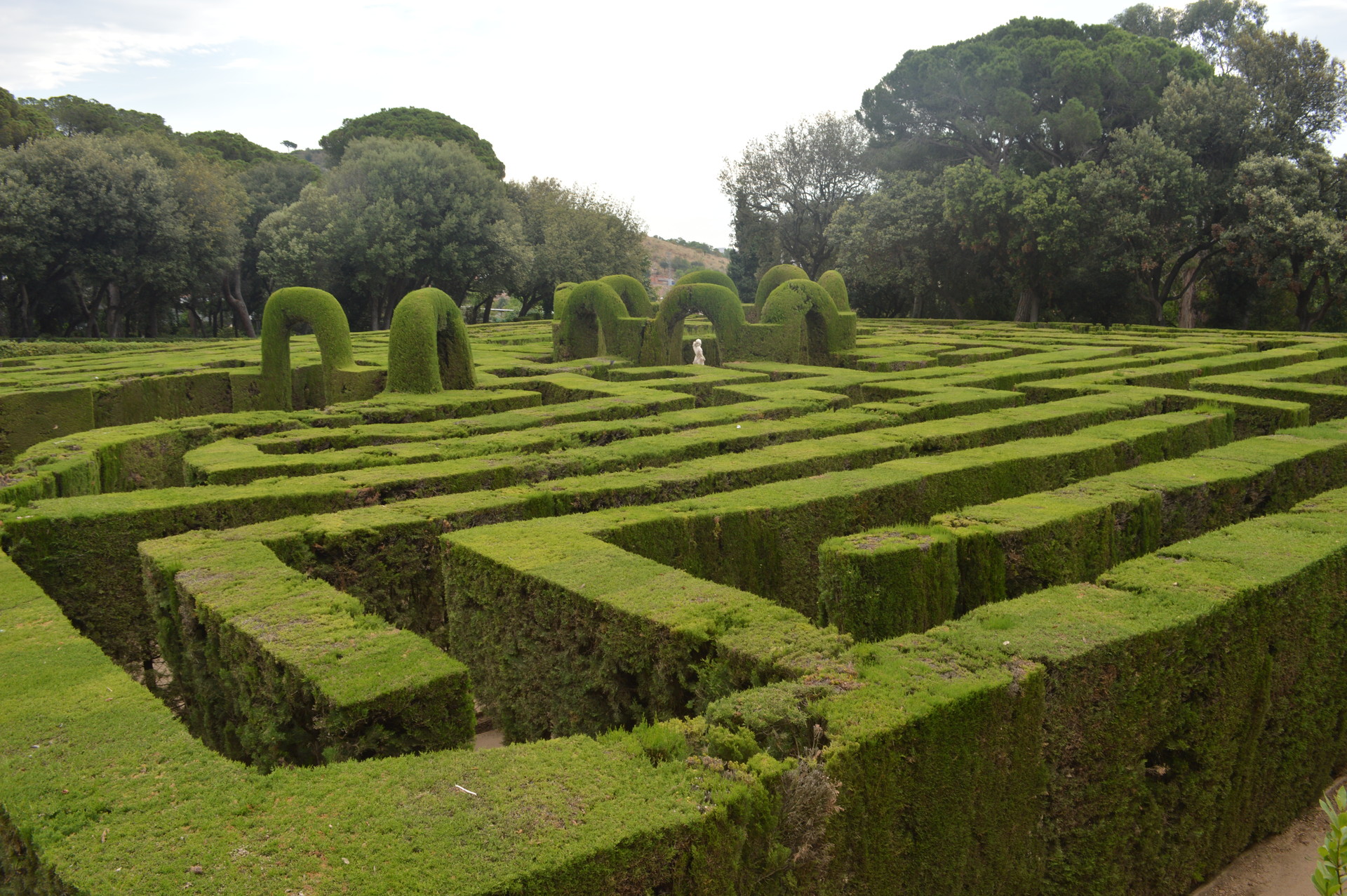
(The Labyrinth)
In addition to the labyrinth itself, there is a small lake, a river crossed with sweet little stone bridges, statues, and a path leading through verdant, peaceful woodlands complete with small waterfalls cascading over shining rocks.
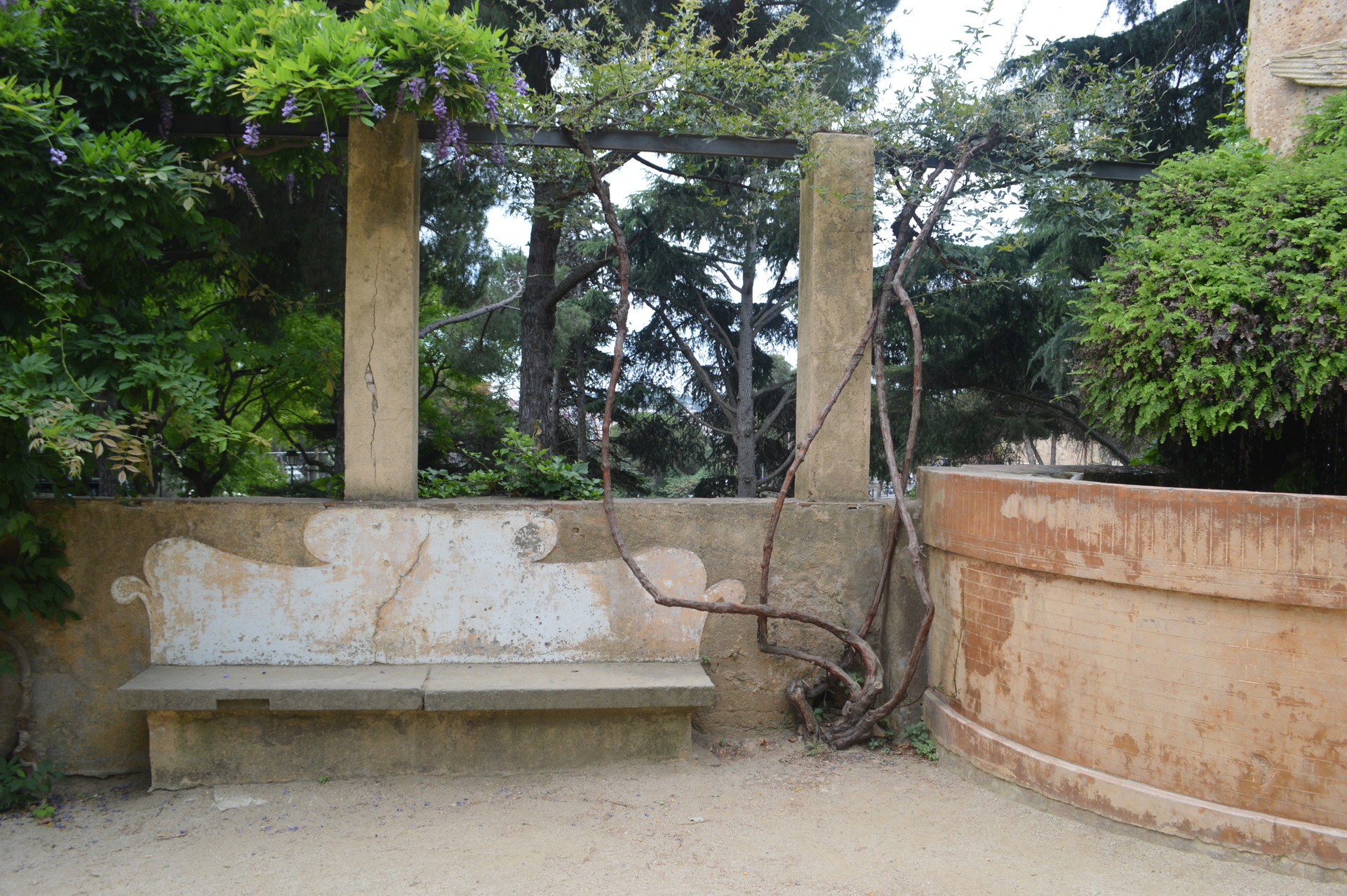
As you can see in the photo above, there is a slightly neglected element to the walls surrounding the park, giving it a romantic air of a treasure long-forgotten; the labyrinth itself is very well-kept, though, but it is still a nice illusion. This is the place to go when you want to get away from the hustle and bustle of the tourists around the better-known sights to see. You can still feel like you have seen something new, whilst exchanging the traffic and concrete for a soothingly quiet, almost-cinematically styled taste of nature.
Photo gallery
Content available in other languages
- Polski: Co warto zobaczyć w Barcelonie?
- Italiano: Cosa vedere a Barcellona
- Español: Barcelona: qué hay que ver
Want to have your own Erasmus blog?
If you are experiencing living abroad, you're an avid traveller or want to promote the city where you live... create your own blog and share your adventures!
I want to create my Erasmus blog! →




























Comments (0 comments)